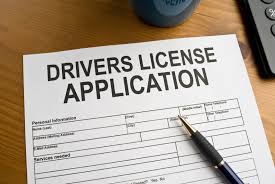There are two distinct developments
in this process. The first are ePassports, which add a layer of security to traditional non‑electronic passports by embedding an electronic chip in the passport booklet. It stores the biographical information visible on page 2 of the passport as well as a digital security feature. This digital security feature is a 'digital signature' unique to each country and can be verified using their respective certificates.Sanjay Bhattacharyya, Secretary of the Consular, Passport & Visa (CPV) Division at the Ministry of External Affairs (MEA), tweeted as :
India 
compliant - produced at India Security Press, Nashik - #eGovernance
India had issued 20,000 official and diplomatic ePassports on a trial basis with an electronic microprocessor chip embedded in them. The MEA is working with the Indian Security Press in Nashik, and National Informatics Centre on the chip-enabled ePassports with advanced security features.
The other plan is to introduce fully digital passports that can even be carried on mobile phones.
Do other countries use them?
According to the ICAO, more than 100 states and non-state entities such as the United Nations, currently issue ePassports. There are over 490 million ePassports in circulation. In India’s immediate neighbourhood, Nepal began its own exercise of issuing ePassports to citizens in November 2021. Bangladesh has phased out the issuance of older machine-readable passports in favour of ePassports.
In the ePassport issued by some countries, the machine-readable data, which is usually scanned through a barcode, has now been transferred directly to the polycarbonate paper that makes up the pages of the passport booklet.
According to Pune-based Allied Market Research, the global ePassport market size is expected to grow from $20.9 billion in 2020 to $ 97.6 billion by 2027, at a compound annual growth rate of 27.5 percent from 2021 to 2027.
What will be the benefits of ePassports ?
The security of travel documents would also be significantly upgraded as a result. Officials say the move is to make forgery of passports difficult and to help faster processing at immigration counters for passengers. These ePassports will be based on ICAO standards.
Increased security features will also make the passport more acceptable by a wider list of countries that already use these features. Consequently, the number of countries one can access with an Indian passport without a prior visa may also go up.
According to the Henley Passport Index for 2021, a ranking of all the world’s passports according to the numbher of destinations their holder can access without a prior visa, the Indian passport ranks 90th globally in terms of its strength.
Despite being a large geopolitical power, India's ranking has fallen from 74 in 2013. Indians can currently access 58 countries without a prior visa, choosing to get visa on arrival or other systems such as the Electronic Travel Authorization in Sri Lanka.
The overall time required for issuing passports is also set to minimized. The process is geared towards reducing the current delays in police verification by ensuring information passes electronically from a centralized database to which all relevant authorities would connect.
When will it be launched?
The idea of upgrading the features and look of India's physical passport has been around for quite some time. In 2016, then Minister of State for External Affairs VK Singh said chip-embedded ePassports would be introduced by early 2017.
The initiative missed several deadlines. In June 2020, External Affairs Minister S Jaishankar said the procurement process for the production of chip-based passports was underway. He also said the process needs to be hastened.
All 36 passport offices in India are set to issue ePassports after components of the personalisation system are inducted in the existing passport issuance system.












